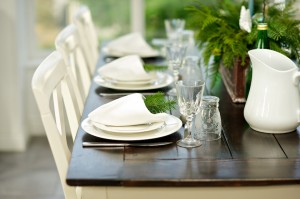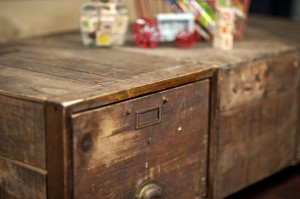Last week I introduced Darryl with an interview style post where he discussed the basics of starting up a WordPress blog from scratch. All of that content and more will find its home on a permanent page here on my site soon. This week I am interviewing him about photography. As you may or may not know, he takes most of the photographs for my site and does all of the “technical” direction of any other shot. Over the years he has taught me a lot about photography; he is a great teacher. So hopefully you all find this interesting. Like the previous Q&A post, the rules are the same. Send in any question you may have as a comment, email, Facebook Fanpage comment, or whatever, and he will answer them all.
Jodi: The first question I hear all the time, do you need a good (expensive) camera to take these photos?
Darryl: No, not really. Especially if the camera was made in the last few years. The technological development in cameras in the past 5 years has been truly outstanding. That said, lens quality is more of the issue. Some of the kit lenses that come with DSLR’s now are very good, but not all of them. They will also limit your ability to control depth of field (how much of an image that is in focus), on close up images. With good discipline, most of your typical home blog shots could be taken on a wide variety of cameras, from good point and shoots to DSLR’s.

Jodi: What advice would you give to someone buying a new camera?
Darryl: First, forget about Megapixels. ALL cameras nowadays have more than enough resolution (unless you plan to have your shots blown up to Billboard size). What we really care about now is how good the image quality remains as you increase the ISO (sensitivity to light). If you can shoot in the higher ISO settings with good quality, it removes some limits as to how and when you shoot.

Second, spend your money on lenses, not on the camera body. If you make a good choice of camera platform you can keep your lenses for years, and they retain their value. By comparison, your DSLR will be obsolete in only a few years. A good quality lens will not only give sharp images, it may also give you a wider perspective than the average kit lens, and/or give you a larger minimum aperture (lets in more light, so it allows you to shoot in dimmer lit rooms and will allow you to control depth of field). I have some lenses that are over 20 years old that are still really sharp and work perfectly.
Third, do some research about the camera brands out there first. You are making a choice of a camera System, so you want to choose carefully. Each company does things a little different, so you want to find the one that works for your needs (present and future) the best. The hardest part of what I just said was that not everyone has someone to talk to about that kind of stuff and you can’t always trust the guy at the camera shop for honest advice. Find a friend that knows cameras, or a really good camera shop, or … ask me.
Jodi: So what kind of camera system do you use?
Darryl: I shoot with Nikon cameras, except my Canon G11 point & shoot. I have been shooting on Nikon for over 15 years, so I have a lot of confidence in their product. Plus over that many years I have acquired enough equipment for my “system” to make it unappealing to switch.
Jodi: What advice do you have for my readers to take more consistent pictures?
Darryl: That’s a whole lot of question. I’ll try to answer it as concise as possible.
- Connect with the picture you are trying to make before you take it. Try looking through the camera for a minute without clicking the shutter. Move the camera up, down, left, right, until it looks right. Move furniture, or whatever. Remove things that look distracting. Change your perspective so the walls are straight. You get the idea. Rarely is the first shot the best one.
- Get the exposure right. Program/Automatic exposure doesn’t get it right, especially in the house. You want to bias towards being slightly overexposed. either switch into manual mode OR find the exposure compensation settings to over/under expose until the shot looks right.
- If you can’t get enough light in the room, try my on camera flash trick. You don’t want to use direct flash, but try aiming the flash at the ceiling or the wall behind you. If you can’t move the flash, try my secret (well guess not any longer) trick. Put a piece of tinfoil in front of the flash. The light will hit the foil and bounce up and behind you. Adding flash to the room can fill in some of the shadows and take the dark cast out of the image.
- Don’t totally trust the screen on the back of your camera, it isn’t as accurate as your computer screen. Try a few shots at different settings and then look at them on the computer and then back on the camera. That will help you learn your display.
- Set your White Balance. If you are unsure, leave it on Auto for now. If your shot is lit primarily with natural light, then choose the daylight setting. If it is lit primarily with lamps or lights, then choose the tungsten (light bulb) setting, or the fluorescent setting if you have that kind of lights. If you are really adventurous, most cameras have a setting that allows you to evaluate white balance just by taking a shot of something white.
- Choose the right file format. The default setting for most cameras is JPG. Keep it there unless you know what RAW is, and have software that can handle it, then think about shooting in RAW. It will give you a lot more room to fine tune the exposure and white balance in post production.
- Do some post processing. Ever wonder why some images look a little dark? You need to do some processing. You don’t need to do much, even just click on auto-enhance, or something like that. At minimum try something like Picassa (by Google) or iPhoto (if you own a Mac). You can do as much or as little processing as you like, just do some.
- This has nothing to do with what pictures look like, but please, please, please keep more than one copy of all your photos, on at least two different hard drives. I have heard to many stories of loss of photos because of hard drive failure. Don’t trust your precious photos to just one hard drive. Best case scenario would see at least two copies of an image file at your place, and a third copy somewhere else. Either an online backup place, or just an external hard drive that stays at someone else’s house.
Jodi: So what is the deal with flash? I have read in other places that it is “bad”, but I know you shoot with it a lot of the time.
Darryl: Flash is misunderstood. When I started shooting I only used natural light. It took a while to learn and be comfortable using flash. When used inappropriately the results look pretty bad. If used appropriately, the results can be surprising. It is worth learning when the time is right. It opens up a lot of possibilities.

Jodi: Thanks for taking the time to answer all these questions for me. I’m sure lots of my readers will appreciate it.
Darryl: No problem. I love talking about this kind of stuff. If anyone has any questions, please fire away. I’ll do my best to answer.
I truly appreciate this information. I own a DSLR but do not know enough about it. I find that I use the program mode with an external flash. I get some great pictures, but I feel like most of that is pure luck. I would like to know more about ISO. What is it exactly?
Thank you!
Great question. ISO is simply a measure of the camera’s sensitivity to light. You will see it in your settings in a numerical format (ISO 100, 200, 400, 800, 1600, etc). The larger the number, the higher the sensitivity. It does come with a catch, though. Light sensitivity comes at the expense of image quality, known as noise. Our own eyes even have the same limitation. We can see in a dark room, but at a much lower quality. So the trick is finding out what your camera is capable of while still maitaining sufficient image quality. I’ll give you a hint, it isn’t the highest number on your camera, it is usually at least half of that. So if your camera has a max setting of ISO 3200, chances are your image quality will really start to suffer after ISO 800. Better ISO quality is the main reason I would advocate buying a new camera, it is that big of a deal.
ISO makes up one third of what is known as the exposure triangle, with the other two variables being shutter speed and aperture. Now you get to choose how automated this process is. In Auto ISO and program mode, the camera makes all three of those decisions for you. With Auto ISO still on you can choose Aperture priority mode or shutter priority mode to take control of one of those variables. Turn off Auto ISO and you are now in control of 2 of 3 variables. Go to Manual and you now control all three.
Does that answer your question? Any other questions?
Yes. Your information regarding ISO was very good. I was wondering if you could explain more about the exposure triangle and what it means to control shutter speed and aperture. I find that when I shoot in manual mode, it is trial and error (mainly error) to get the picture looking the way I would like.
Thanks!
I did a whole post on this answer, just too much to find in a reply window! Check it out here